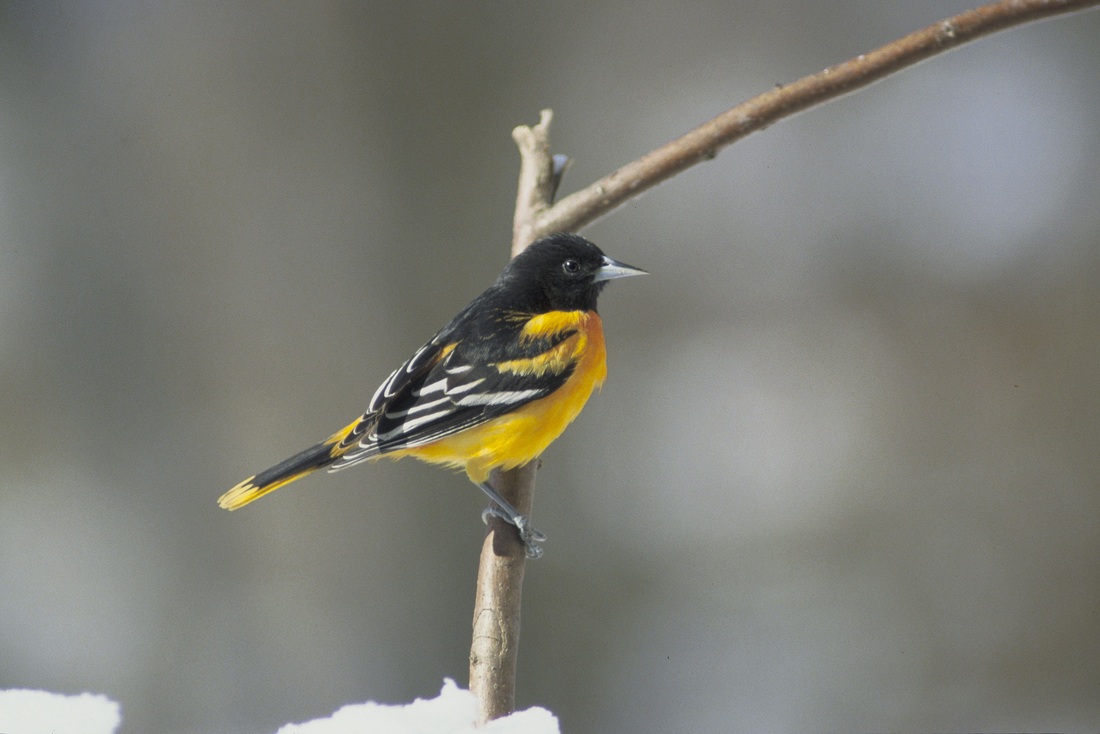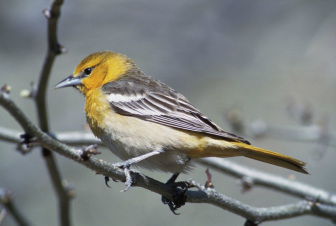|
|
baltimore orioleIcterus galbula
Identification:
This gorgeous orange and black bird is a little smaller than a robin, but larger than a sparrow. Males have brilliant orange underparts, black, white, and orange wings, a bright orange rump, orange-rimmed black tail, and a black head with a sturdy longish bill. Females and young are gray and yellow. Behavior: The Baltimore Oriole flits in treetops, gleaning insects and looking for fruit. The female builds a remarkable suspended nest that looks a little like a hanging sock. Baltimore Orioles avidly consume many dark-colored, juicy fruits like blueberries, mulberries, and even (according to some reports) tomatoes. They also eat many pest species like tent caterpillars. They sing a beautiful flutelike song. What brings it to the SBG? Food, cover, and nesting sites. This species prefers open woodlands, “edge” habitats, parks, backyards, and orchards. They build a cleverly woven hanging nest usually at the end of a tree branch. When can I see it? Spring and summer. You’ll probably need to look high up as it spends a good bit of time in the treetops. This species winters in the Caribbean rim – Florida, Cuba, Central America, and northern South America. |


